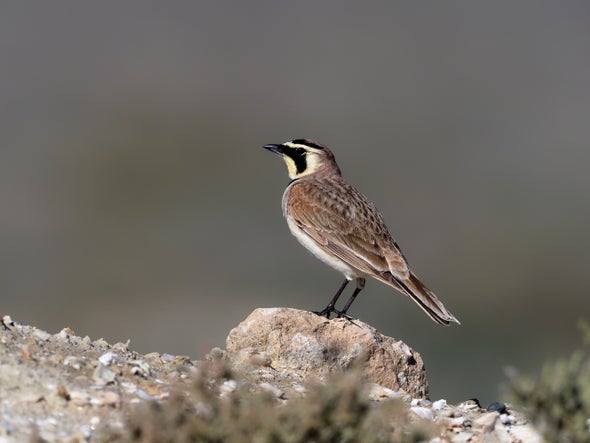
Science News Briefs from All Over
by Sarah Lewin FrasierHere are some brief reports about science and technology from around the planet, including one about an incredibly well-preserved horned lark (Eremophila alpestris), like the one pictured, that lived 46,000 years ago.
Full Transcript
I’m assistant news editor Sarah Lewin Frasier. And here’s a short piece from the May 2020 issue of the magazine, in the section called Advances: Dispatches from the Frontiers of Science, Technology and Medicine.
The article is titled “Quick Hits,” and it’s a rundown of some non-coronavirus stories from around the globe.
From Chile:
Baffled by unexplained skin lesions on blue whales near Chile, scientists shot darts by crossbow to take samples from the whales’ blisters and fat in a bid to identify potential pollutant causes.
From Russia:
A 46,000-year-old bird recovered from the Siberian permafrost is in such good condition that it looks like it died days ago, researchers say. It is the only nearly intact bird carcass found from the most recent ice age.
From Zimbabwe and Mozambique:
New research on African turquoise killifish, which live in ponds that dry up seasonally, reveals that their embryos can suspend development by up to two years, with no impact on their ultimate life span after hatching.
From China:
Researchers in northern China uncovered fossils of the oldest green algae on record, a multicellular two-millimeter organism that lived a billion years ago—the earliest known ancestor of today’s photosynthesizing plants.
From Malaysia:
Scientists say they are scaling up an experimental farm that uses metal-loving plants to draw and harvest nickel from the soil in the Malaysian portion of Borneo. The expanded farm will cover 50 acres.
From Austria:
For the first time, engineers executed a new bridge-building technique with two vertical girders, erecting them upward before unfurling the span like an umbrella. Two such structures will form bridges across Austrian rivers. The process saves time and cuts down massively on the scaffolding needed to build horizontally.
That was “Quick Hits.” I’m Sarah Lewin Frasier.